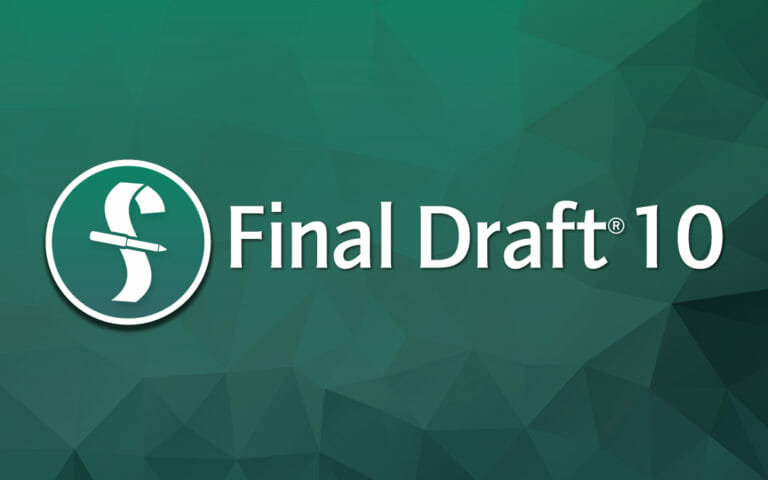Sign up for the
TSL Newsletter
and get $50 off Final Draft 12
By Mark Stasenko · October 10, 2016

Final Draft 10 embodies the old Hollywood mantra of “same, but different”. Final Draft 10 has many of the same features longtime users of the software will be familiar with – fixed formatting, character reports, statistical reports, auto-fill, and more – but also adds a few very key features to the slate. What’s great about the newness of Final Draft 10 is in its simplicity. The learning curve on Final Draft 10 is about the same as the learning curve of switching from a pencil to a pen – writers who’ve been using Final Draft will jump right into the new software.
Beat Sheets
One of the greatest new elements of Final Draft 10 is the beat sheet. It is the simplest, most intuitive way to beat out a story that exists shy of using Post-it notes. Now that it’s in the software, writers don’t have to cover the kitchen table for days on end. The creation of beats is a double-click and type mechanism, and a writer can drag, drop, and move around their story without issue. By having outlining tools in the same program as the script itself, it helps writers flow more smoothly from the beats of the story to the completion of the script. This has been a long desired feature and is introduced in a truly effective way.
Collaborative Writing
For the writers who work with writing partners, this feature will completely revolutionize the way they create their screenplays. The real time collaboration allows for writers to work on scenes together from anywhere in the world. Writing teams will no longer have to trade scenes and then retroactively blend the two voices together – now the best of every writer on the team will be included in the draft immediately.
Even for writers who don’t traditionally work in teams, this feature can be a huge advantage. Whether working with a friend on feedback or brainstorming with a development exec, the rewriting and development process can be streamlined by giving users access to the same script for changes. Filmmaking is a collaborative effort, so it’s necessary to have a software that matches the art.
Story Mapping
The new story mapping feature is very intuitive and easily allows writers to color code the scenes in their script and visually track the story along the top. The flexibility of the tool also means one writer could use it to track the hero’s arc in a traditional script, while someone writing an ensemble piece could use it to track which key characters are in which scenes. The downside of this feature is that it is pretty manual – it requires the writer to color code scenes and come up with their own systems. While this will certainly be a great tool for some writers, it won’t necessarily change the writing process for most.
Alternate Dialogue
And the comedy world rejoices! Alternate dialogue allows writers to put as many lines of dialogue at a certain exchange as they’d like. If a writer has four jokes for one character to tell, put them all in, have the favorite be user facing, and hide the rest for later. While this will certainly help comedy writers, this is great for writers in every genre. Want to try a few different lines to figure out which one will bring out the most tears – put them all in. Want to try a few different catch phrases for an action hero – keep them all. This is arguably the best dialogue tool that exists today. By not tying the writer to one line, it simultaneously improves dialogue and decreases writer’s block. This is a feature every writer will use.
Overall
Overall, Final Draft 10 is the same reliable, great product writers and the industry have come to know, but it includes a few key new features. What is so great about the new software is its ease of use. While there are plenty of programs out there that allow a writer to beat out a story, nothing is as user friendly or close to the project as Final Draft’s new beat sheet. And while a writer can always keep track of other dialogue options in a notepad, there’s never been anything so seamlessly integrated with the script before. While Final Draft 10 may not quite write a script itself, it is definitely a big jump forward in helping writers the entire way through their process.